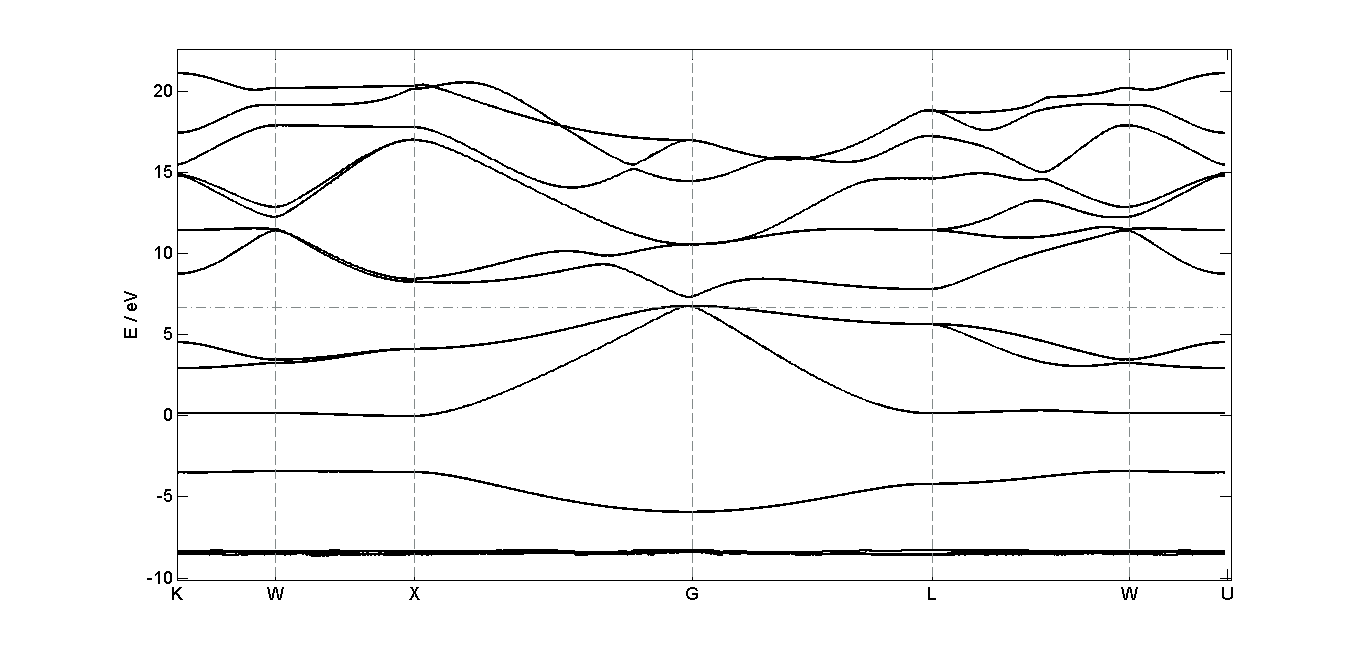
Problem 1
(a) What are surface plasmons and why do they only exist at an interface?
(b) How could surface plasmons be measured?
(c) Surface plasmons propagate at an interface between a metal and a dielectric. They extend a finite distance into the metal. How can this distance be calculated from the dielectric function?
(d) A periodic arrays of holes are drilled into the interface. How does this modify the expression for the conservation of momentum when the surface plasmons scatter?
Problem 2
The dispersion relation of a material is shown below. The dashed horizontal line is the energy of the highest occupied electron state.

What can you deduce about this material from the band structure?
Problem 3
(a) In the Nerst effect, a sample is placed in a magnetic field and a temperature gradient that are perpendicular to each other. The electric field in the direction perpendicular to both the magnetic field and the temperature gradient is measured. How could the Boltzmann equation be used to calculate this electric field?
(b) How does the Nerst effect depend on the electron and phonon dispersion relations?
(c) What is the relaxation time approximation? What changes in a relaxation time?
Problem 4
Barium titanate is a ferroelectric that undergoes a first order structural phase transition from a rhombohedral phase to a monoclinic phase at about -80 C.
(a) What could be used as the order parameter? What symmetry is broken?
(b) Explain briefly what the Landau theory of first order phase transitions is.
(c) Sketch the specific heat and the electric susceptibility of barium titanate as a function of temperature. Where does the latent heat appear in these plots?
(d) Sketch the pyroelectric coefficient as a function of temperature for barium titanate.